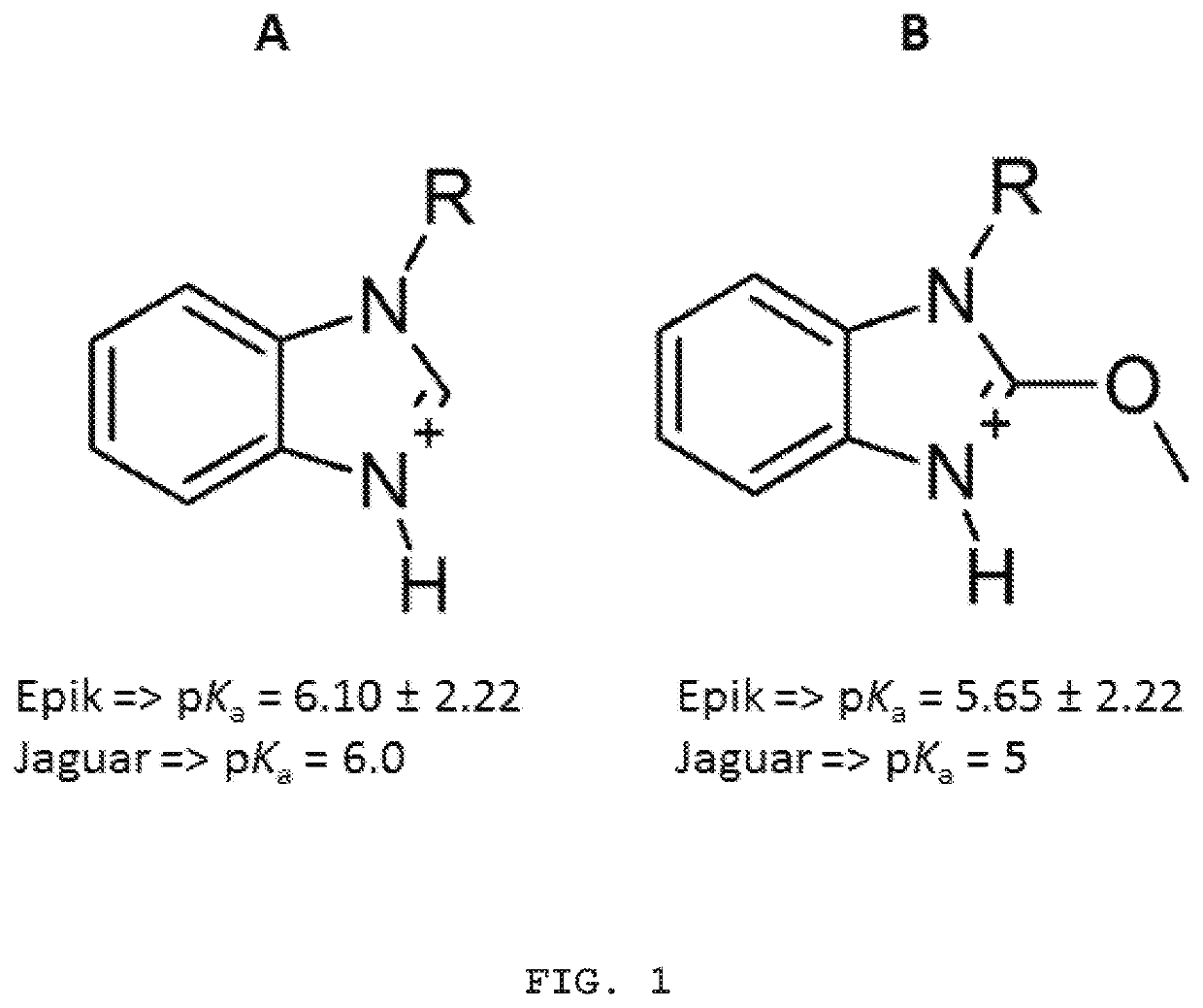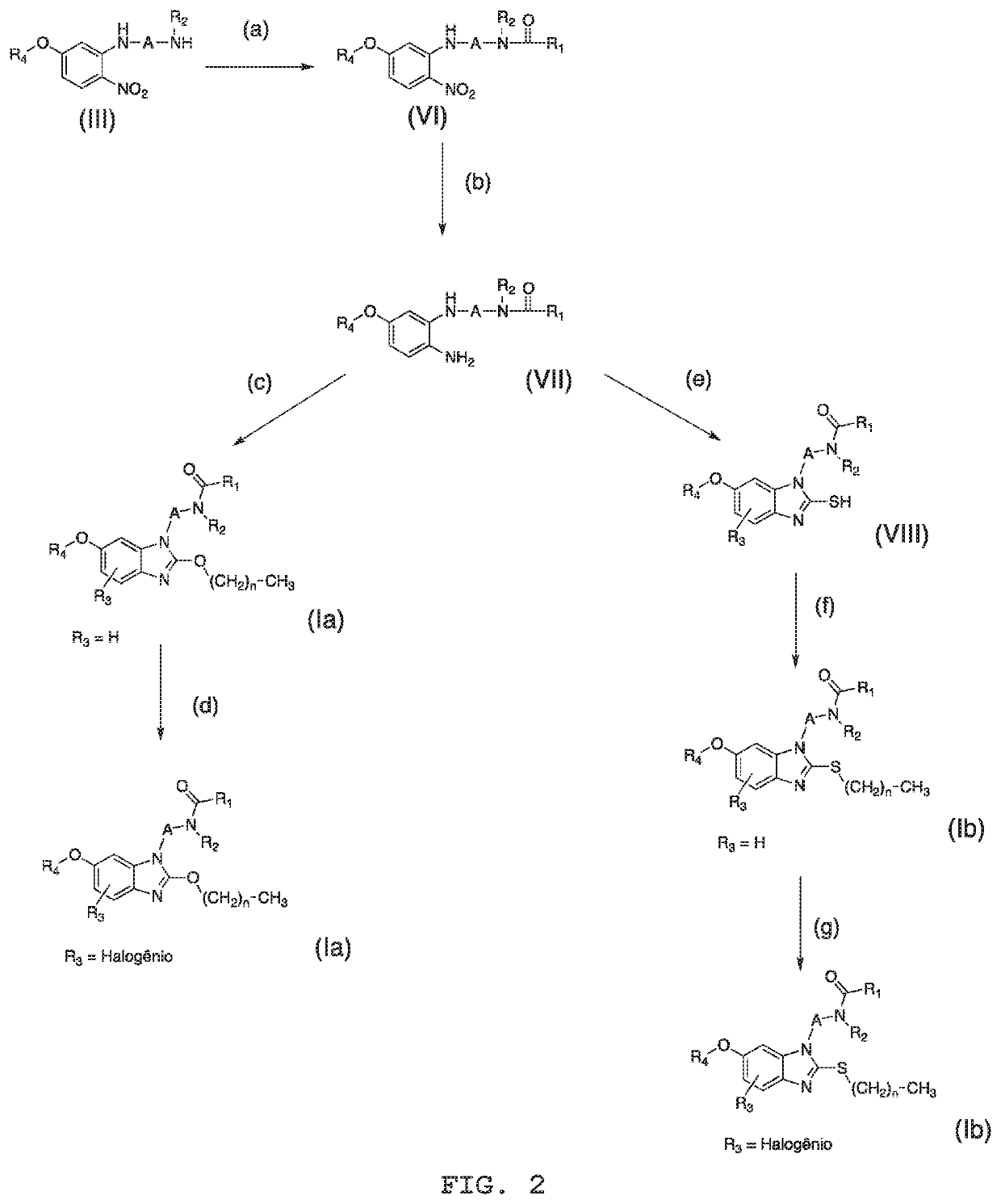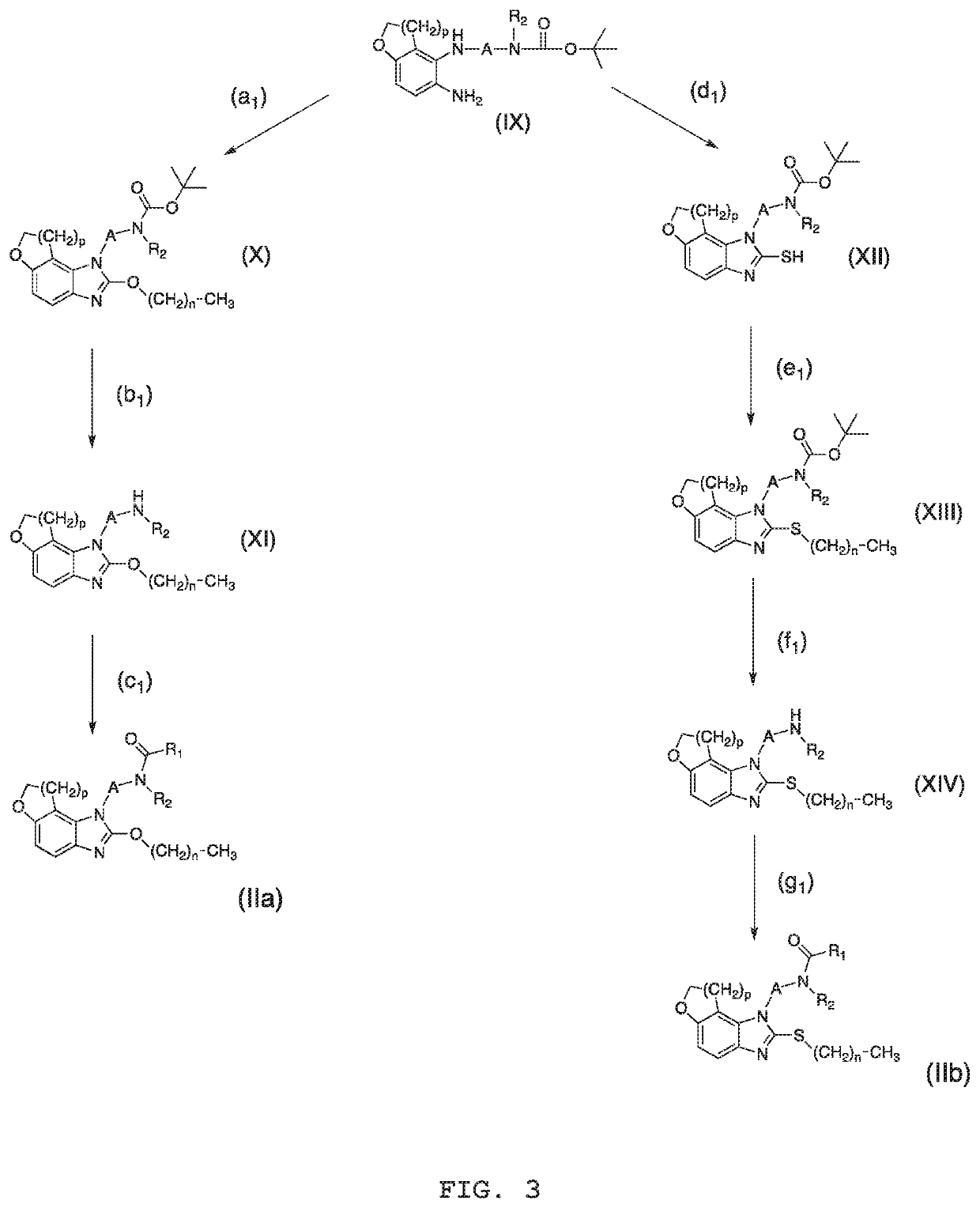Compounds, process for obtaining the compounds, pharmaceutical composition, use of the compounds and method for treating psychiatric disorders and/or sleep disorders
a technology of melatonin and compound, applied in the field of compound, process for obtaining compound, pharmaceutical composition, use of compound and method for treating psychiatric disorders and/or sleep disorders, can solve the problems of low absolute bioavailability, unfavorable pharmacokinetic profile of commercial melatonin, and present non-optimal pharmacokinetics of oral drugs
- Summary
- Abstract
- Description
- Claims
- Application Information
AI Technical Summary
Problems solved by technology
Method used
Image
Examples
example 1
[0110]N-(2-(2-ethoxy-6-methoxy-1H-benzimidazol-1-yl)ethyl)acetamide
(A) N-(2-((5-methoxy-2-nitrophenyl)amino)ethyl)acetamide
[0111]In a 500 ml reactor equipped with reflux condenser, magnetic stirring and heating, N1-(5-methoxy-2-nitrophenyl)ethane-1,2-diamine (6.0 g, 28.4 mmol) (Depreux Et al., Synthetic Communications 1994, col. 24 (15), pp. 2123-2132), ethanol (200 ml) and acetic anhydride (2.78 ml, 29.2 mmol) were added. The reaction medium was heated to a temperature of 60° C. and kept under stirring for 1 hour to complete the reaction. The ethanol was roto-evaporated to dryness and the residue dissolved in chloroform (400 ml). The chloroform solution was washed with 15% aqueous sodium carbonate solution (2×200 ml). The organic phase was separated, dried with magnesium sulfate and roto-evaporated to yield the title compound as a yellow solid which was used directly in the next step. (m=6.8 g. Yield: 94.5%)
(B) N-(2-((2-amino-5-methoxyphenyl)amino)ethyl)acetamide
[0112]In a 500 ml r...
example 2
[0115]N-(2-(2-ethoxy-6-methoxy-1H-benzimidazol-1-yl)ethyl)propionamide
(A) N-(2-((5-methoxy-2-nitrophenyl)amino)ethyl)propionamide
[0116]In a 100 ml reactor with magnetic stirring, N1-(5-methoxy-2-nitrophenyl)ethane-1,2-diamine(1 g, 4.73 mmol), dichloromethane (50 ml) and triethylamine (0.67 ml, 4.81 mmol) were added. The reaction medium was kept under stirring and a solution of propionyl chloride (0.42 ml, 4.80 mmol) in dichloromethane (10 ml) was slowly added through an addition funnel. The reaction medium was kept under stirring at room temperature for 2 hours. After the completion of the reaction, 20 ml of 10% aqueous hydrochloric acid solution (20 ml) were added. The dichloromethane was separated and the aqueous phase extracted with dichloromethane (2×20 ml). The organic phase was washed with 5% aqueous bicarbonate solution (100 ml) and saturated sodium chloride solution (100 ml). The organic extract was separated, dried with anhydrous magnesium sulfate and roto-evaporated, yield...
example 3
[0119]N-(2-(2-ethoxy-6-methoxy-1H-benzimidazol-1-yl)ethyl)butyramide
(A) N-(2-((5-methoxy-2-nitrophenyl)amino)ethyl)butyramide
[0120]In a 100 ml reactor with magnetic stirring, N1-(5-methoxy-2-nitrophenyl)ethane-1,2-diamine (1 g, 4.73 mmol), dichloromethane (50 ml) and triethylamine (0.67 ml, 4.80 mmol) were added. The reaction medium was kept under stirring and a solution of butanoyl chloride (0.49 ml, 4.73 mmol) in dichloromethane (10 ml) was slowly added through an addition funnel. The reaction medium was kept under stirring at room temperature for 2 hours. After the completion of the reaction, 10% aqueous hydrochloric acid solution (10 ml) was added. The dichloromethane was separated and the aqueous phase extracted with dichloromethane (2×20 ml). The organic phase was washed with 5% aqueous bicarbonate solution (100 ml) and saturated sodium chloride solution (100 ml). The organic extract was separated, dried with anhydrous magnesium sulfate and roto-evaporated, yielding a yellow s...
PUM
| Property | Measurement | Unit |
|---|---|---|
| pKa | aaaaa | aaaaa |
| temperature | aaaaa | aaaaa |
| temperature | aaaaa | aaaaa |
Abstract
Description
Claims
Application Information
 Login to view more
Login to view more - R&D Engineer
- R&D Manager
- IP Professional
- Industry Leading Data Capabilities
- Powerful AI technology
- Patent DNA Extraction
Browse by: Latest US Patents, China's latest patents, Technical Efficacy Thesaurus, Application Domain, Technology Topic.
© 2024 PatSnap. All rights reserved.Legal|Privacy policy|Modern Slavery Act Transparency Statement|Sitemap



